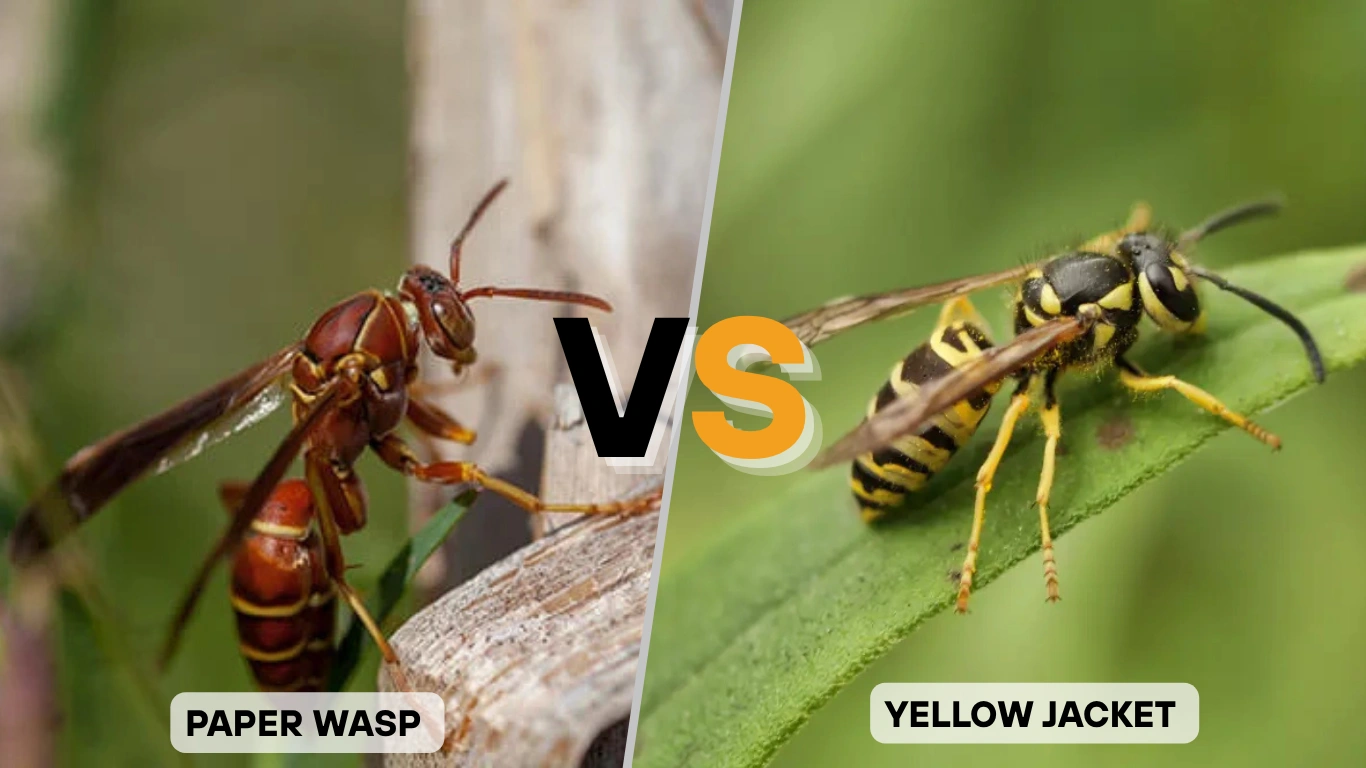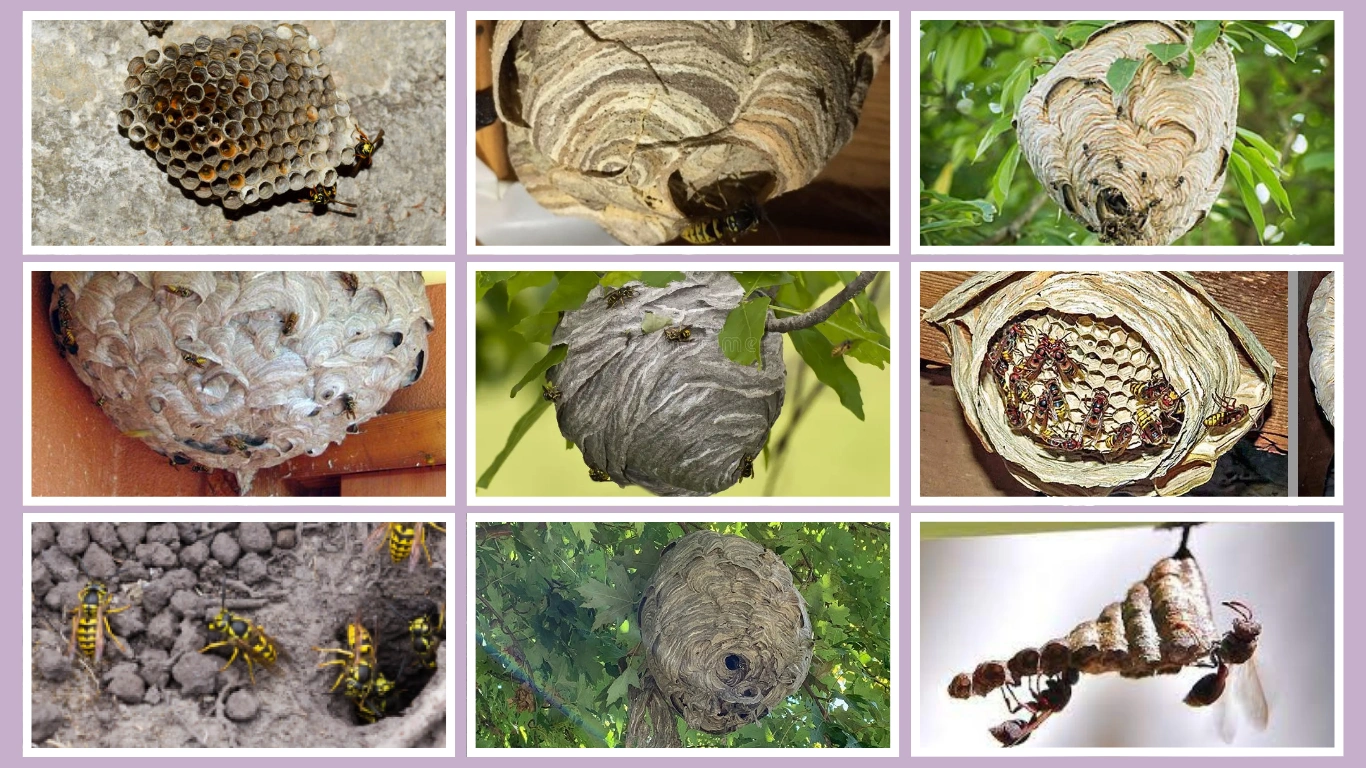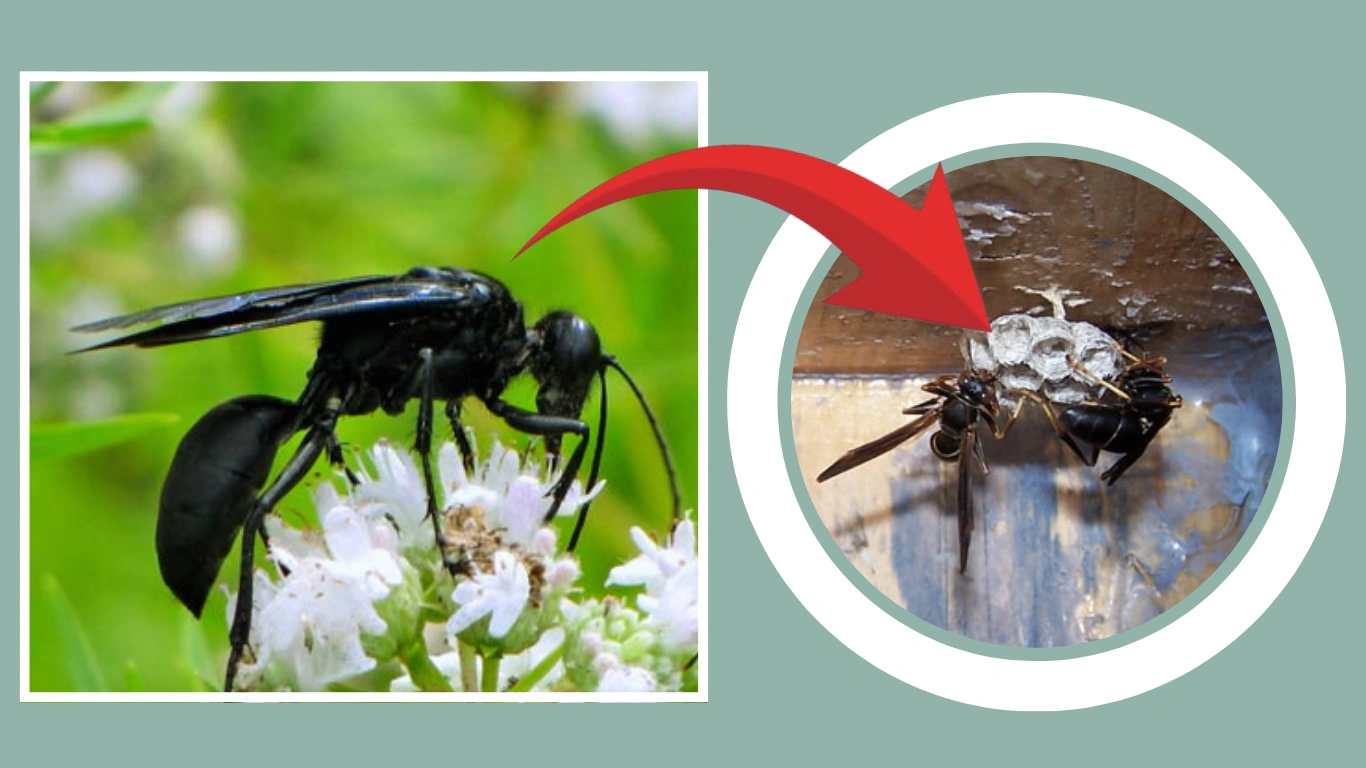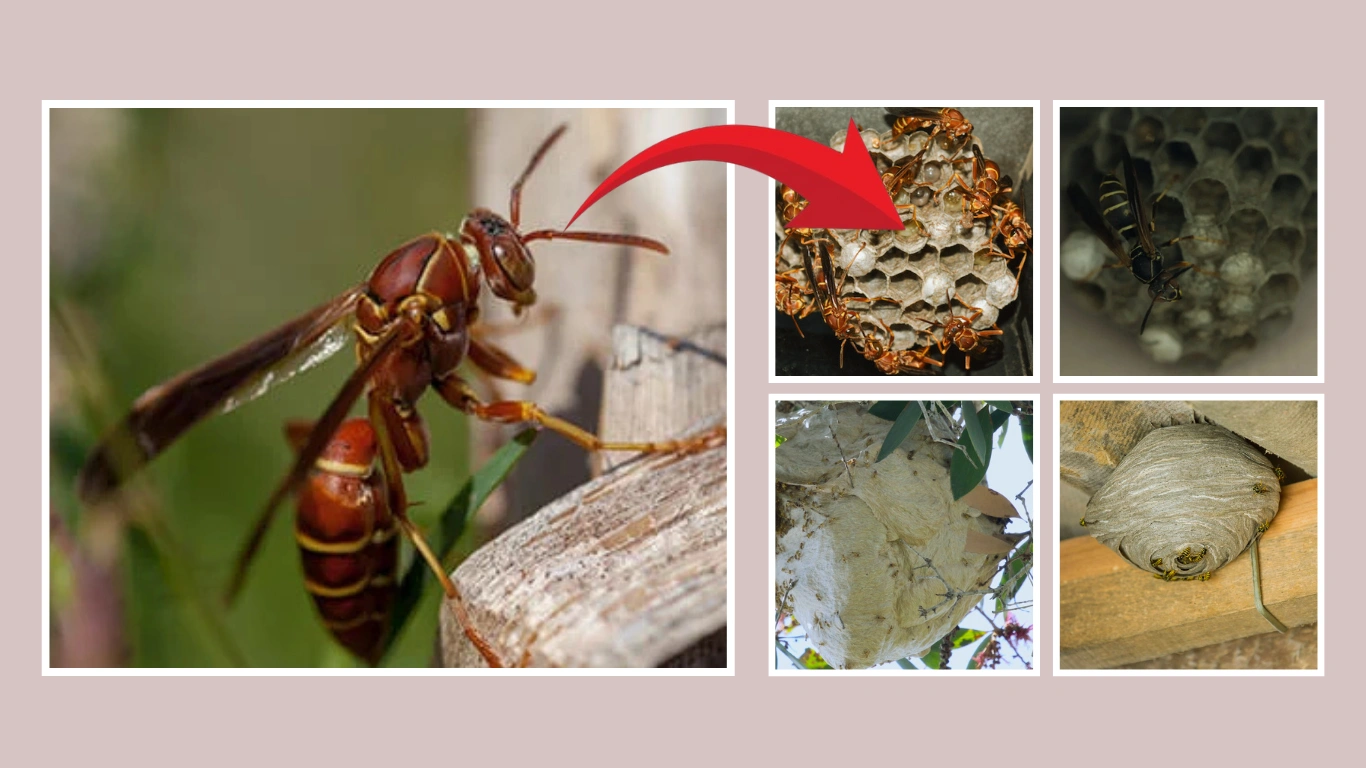When you spot a buzzing striped insect flying near your home or garden, your first thought might be: “Is that a wasp or a yellow jacket?” It’s a common question—and an important one. Both paper wasps and yellow jackets are types of wasps, but they differ in behavior, appearance, nest building, and aggressiveness. Misidentifying them can lead to unnecessary fear—or worse, painful stings.
In this article, I’ll break down 7 major differences between paper wasps and yellow jackets to help you stay informed and safe.
1. Appearance
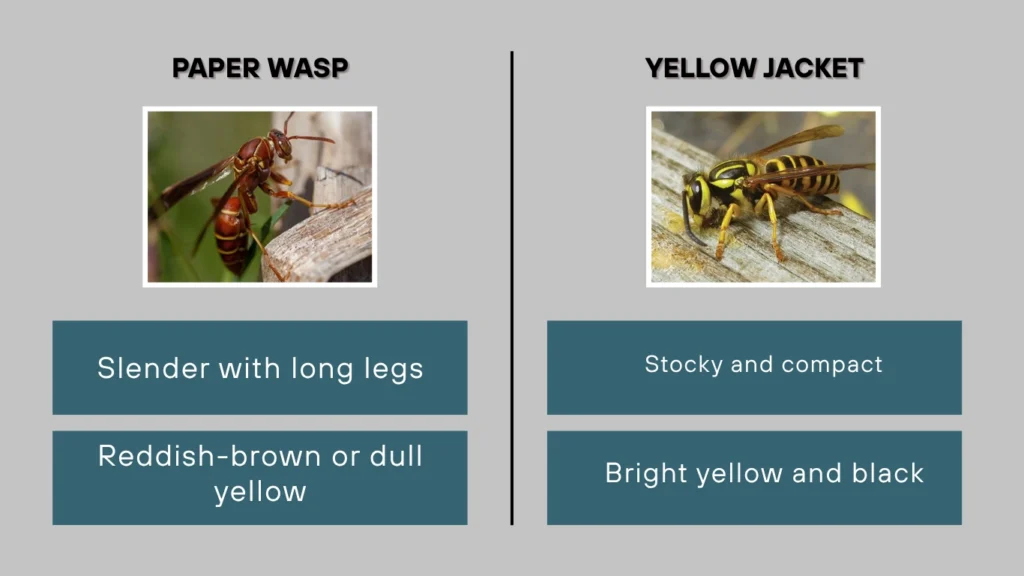
Paper Wasp
Paper wasps have slender bodies, long legs that dangle in flight, and smooth, elongated waists. Their coloration varies—many are reddish-brown or dark with yellow markings.
Yellow Jacket
Yellow jackets are more compact and stocky, with shorter legs tucked in during flight. They are bright yellow with bold black stripes, giving them a more bee-like appearance.
Quick Comparison:
| Feature | Paper Wasp | Yellow Jacket |
| Body Shape | Slender with long legs | Stocky and compact |
| Color | Reddish-brown or dull yellow | Bright yellow and black |
| Flight Posture | Legs hang below | Legs tucked in |
| Waist | Narrow, thread-like | Less defined |
2. Nest Type and Location
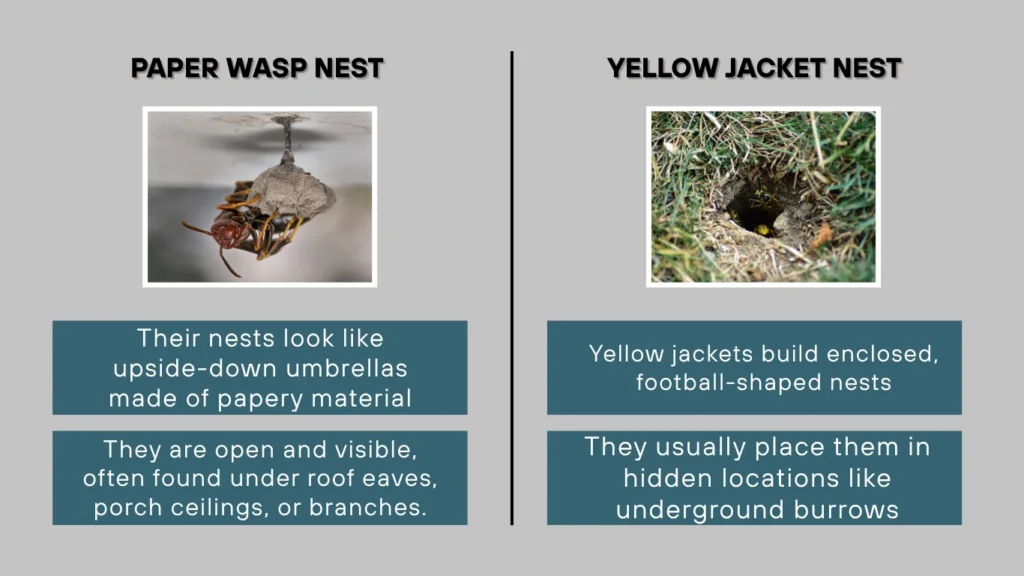
Paper Wasp
Their nests look like upside-down umbrellas made of papery material. They are open and visible, often found under roof eaves, porch ceilings, or branches.
Yellow Jacket
Yellow jackets build enclosed, football-shaped nests. They usually place them in hidden locations like underground burrows, inside wall cavities, or attic spaces, making them harder to detect.
3. Aggression and Defense Behavior
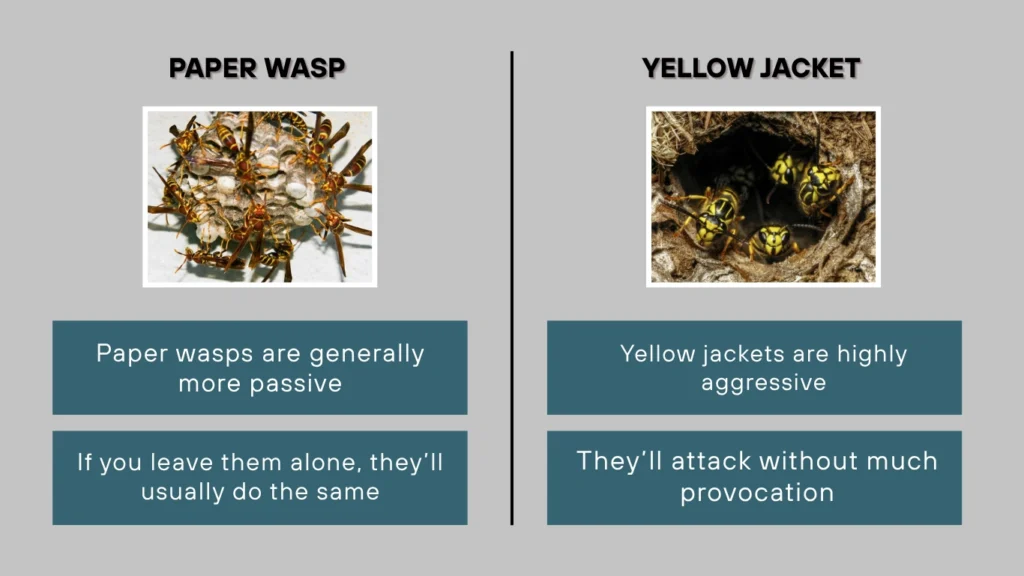
Paper Wasp
Paper wasps are generally more passive. If you leave them alone, they’ll usually do the same. They become defensive only if their nest is disturbed, and even then, they may hover or give warning flights before attacking.
Yellow Jacket
Yellow jackets are highly aggressive. They’ll attack without much provocation and may chase intruders away from their nests. They are especially territorial and protective of their colonies.
4. Sting Pain and Frequency
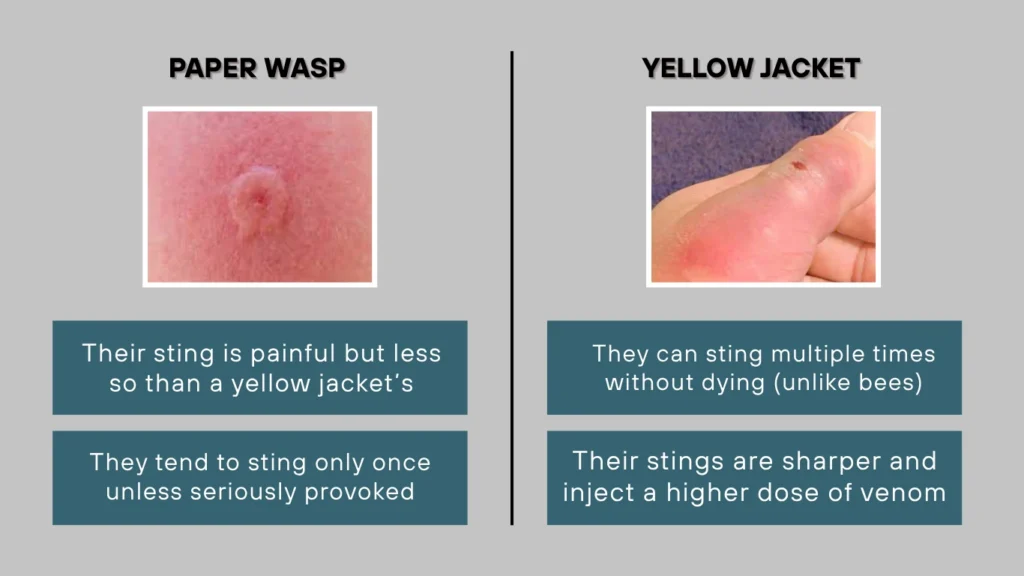
Paper Wasp
Their sting is painful but less so than a yellow jacket’s. They tend to sting only once unless seriously provoked. The reaction is usually mild unless you’re allergic.
Yellow Jacket
They can sting multiple times without dying (unlike bees). Their stings are sharper and inject a higher dose of venom, often resulting in more swelling, pain, and potentially severe allergic reactions.
5. Diet and Scavenging Habits
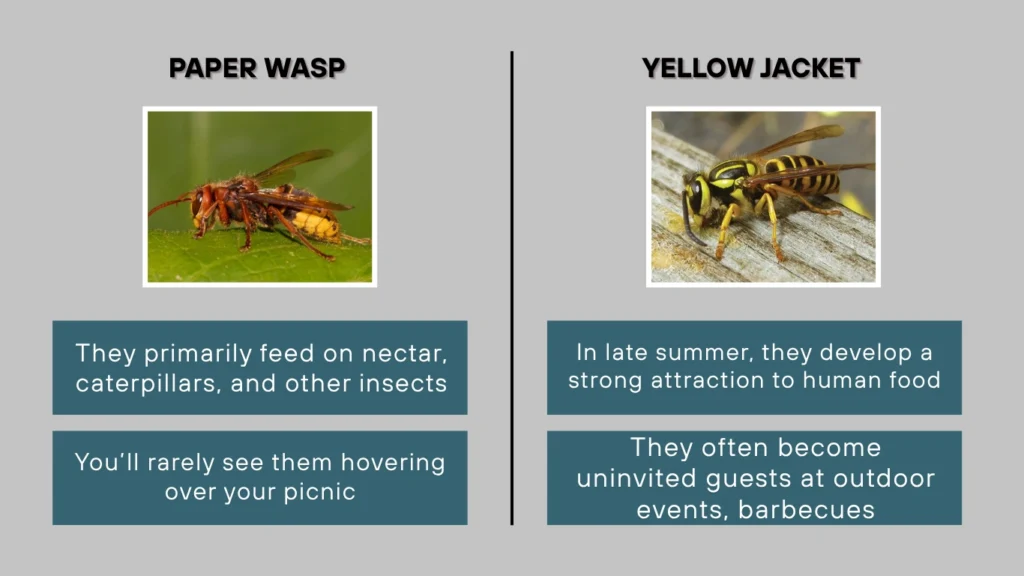
Paper Wasp
They primarily feed on nectar, caterpillars, and other insects, which makes them useful in controlling pests in your garden. You’ll rarely see them hovering over your picnic.
Yellow Jacket
These wasps are scavengers. In late summer, they develop a strong attraction to human food, particularly meat, sweets, and sugary drinks. They often become uninvited guests at outdoor events, barbecues, and trash bins.
6. Seasonal Activity and Lifespan
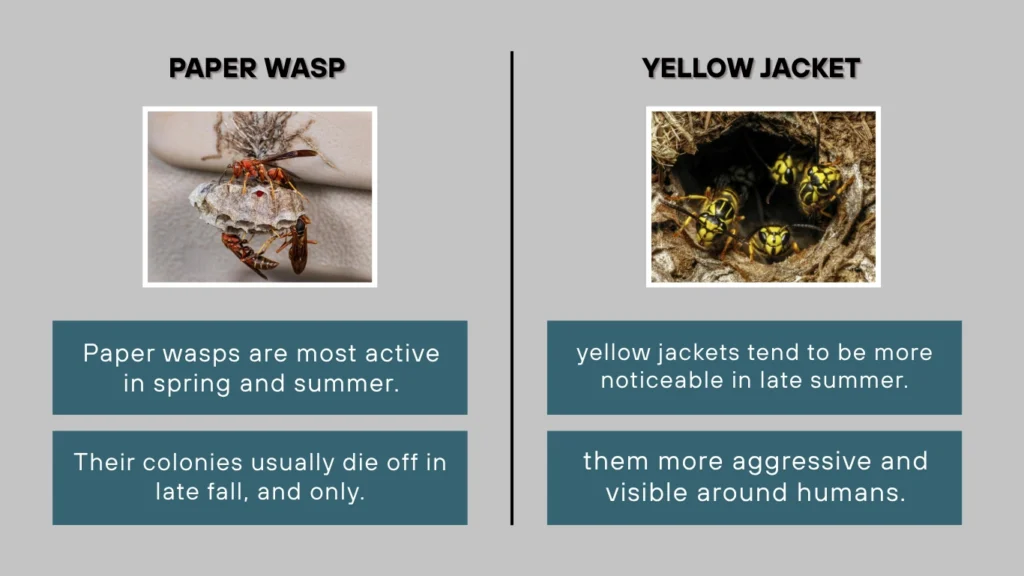
Paper Wasp
Paper wasps are most active in spring and summer. Their colonies usually die off in late fall, and only the fertilized queens survive to start new colonies the following spring.
Yellow Jacket
While also seasonal, yellow jackets tend to be more noticeable in late summer and fall, when their colonies are at their peak and food sources dwindle—making them more aggressive and visible around humans.
7. Ecological Role
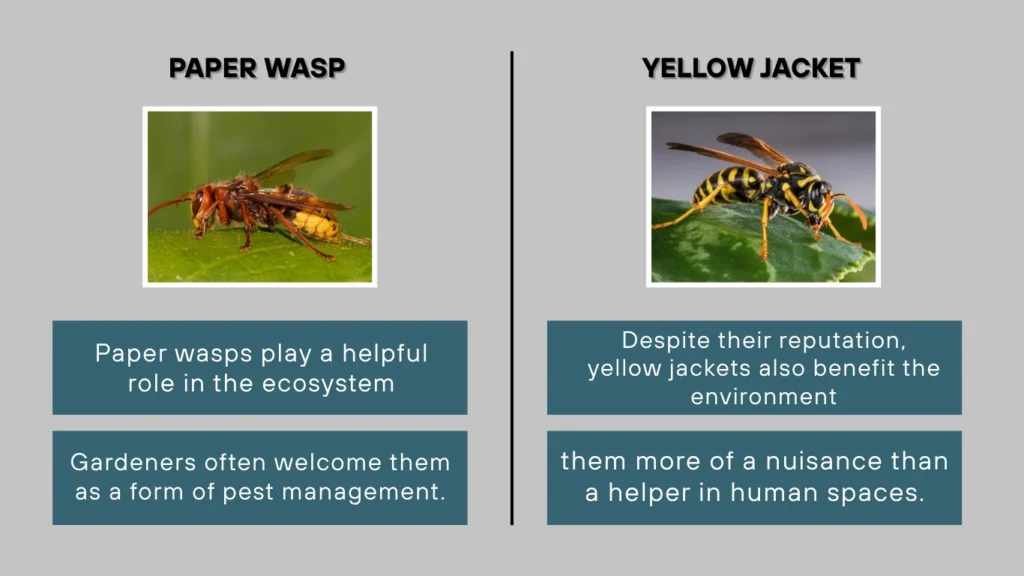
Paper Wasp
Paper wasps play a helpful role in the ecosystem. By feeding on caterpillars and other plant pests, they help control populations naturally. Gardeners often welcome them as a form of pest management.
Yellow Jacket
Despite their reputation, yellow jackets also benefit the environment by feeding on insects. However, their aggressive nature and scavenging habits make them more of a nuisance than a helper in human spaces.
Side-by-Side Comparison Table
Here’s a quick visual summary of the differences between paper wasps and yellow jackets:
| Category | Paper Wasp | Yellow Jacket |
| Body Type | Long, slender with narrow waist | Compact and stocky |
| Color | Reddish-brown, yellowish, or dull | Bright yellow and black |
| Legs in Flight | Dangle visibly | Tucked close to body |
| Nest Type | Open, umbrella-shaped, visible | Enclosed, hidden, often underground or in walls |
| Aggression | Mild; stings only when threatened | Highly aggressive and territorial |
| Sting Behavior | Single sting; less venom | Multiple stings; more venom |
| Diet | Nectar, caterpillars, garden pests | Sweets, meat, garbage, and live prey |
| Seasonal Activity | Spring to early fall | Peaks in late summer to fall |
| Role in Ecosystem | Beneficial; natural pest controller | Mixed; pest control but often a nuisance |
Conclusion
While paper wasps and yellow jackets may look similar at a glance, understanding their distinct behaviors, appearances, and nesting preferences can help you interact with them more safely—or avoid them altogether. Paper wasps are generally less aggressive and helpful to gardens, while yellow jackets are far more confrontational, especially during late summer.
FAQs
Are paper wasps dangerous?
Not usually. They are only aggressive when their nest is threatened and rarely sting unless provoked.
Why are yellow jackets more active in the fall?
Their colonies reach peak size, and food becomes scarce, making them more desperate and aggressive around human food sources.
Can yellow jackets sting through clothes?
Yes, their stingers are sharp enough to penetrate thin clothing.
Do paper wasps reuse their nests?
No, paper wasps do not reuse old nests. A new colony and nest are built each spring by the queen.
How can I get rid of a yellow jacket nest safely?
It’s best to call a licensed pest control expert. Yellow jackets are aggressive and can sting repeatedly, making DIY removal risky.
